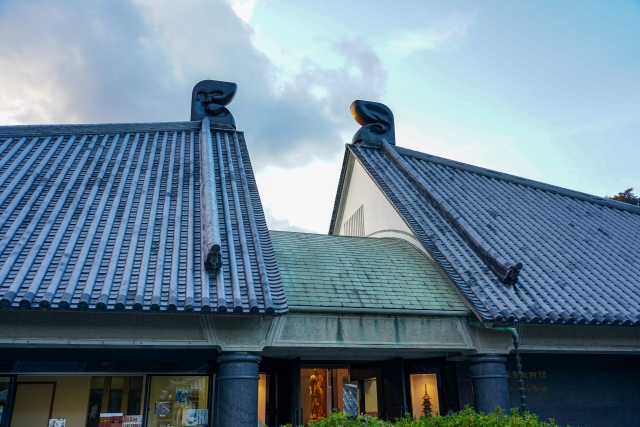About Yashima Temple Treasure House
Yashima is a highland located in the northeastern part of Takamatsu City, Kagawa Prefecture. From a distance, it looks like a roof, and from the mountain, you can see the beautiful Seto Inland Sea. On the mountain of Yashima is Yashima Temple, the 84th temple of Shikoku Reicho, and the New Yashima Aquarium, located on a mountain 290m above sea level.

How to get there
Public transportation: Kotoden Kotoden Yashima Station→10 min. by shuttle bus bound for Yashimayama-jo by Kotoden Bus, 1 min. walk from Yashimayama-jo bus stop.
By car: 13 km, 20 min. from Takamatsu Chuo IC of Takamatsu Expressway
Tips
When I came to Japan, I always saw that Jizo Bodhisattva had such a bib, and I didn’t understand what it meant. Later, after researching it, I found that there is still something to it.
Like the gods in the Asian divine genealogy, Jizo Bodhisattva has been given a variety of missions: Jizo Bodhisattva, either male or female, is both the guardian of travelers and lost souls and the protector of children, especially for those unborn and those who die early. And the lively decoration on these statues is the new hope that modern people have for Japanese Buddhism. They either mourn the loss of their children or give thanks for their salvation. They put hats and scarves on the statues as a way to protect the spirits from nature, and they put bibs on the statues as a symbol of Jizo’s blessing of children.
The story of Jizo Bodhisattva originates from a 14th century story about Saihehara (the river leading from the Yang world to the Underworld), a place similar to the river Styx in Greek mythology, or even Purgatory in the Christian tradition. According to the legend, children who miscarried, were stillborn or died prematurely before their parents passed away would come to the border of hell, a rocky riverbank before entering the underworld.
Here, they are forced to gradually build the tower with stones as a way to atone for the grief they caused to their parents and to increase their merits for their parents’ afterlife. Evil spirits appear every night and destroy the high towers one by one, forcing the children to keep rebuilding them the following day. In order to help the children get rid of the never-ending hard work, Jizo Bodhisattva hid the children within his long sleeves and took them to heaven among Buddhism, and he made a promise to keep fulfilling this task.
Although there are many shades of decoration to dress the Bodhisattva of the Earth, the most common shade is red. This color is quite traditional in Japanese mythology, and in ancient exorcism cultures, bright ruby red or vermillion hues were often used to expel evil spirits. Over time, the color red came to represent both death and life, as evidenced by the Japanese flag of the rising sun and the torii gates of shrines.
After the demise of the Heike family, the bald civet became the guardian deity at Yashima Temple, the 84th temple in the 88th Shikoku province. It has the best ability to change in Japan, and is also the chief general of the civet of Shikoku.
It is said that one winter, he gathered 300 civets to the snow garden of Yashima Temple, divided into two factions, and staged the whole battle of Genpei, and he himself changed into Gen Yoshitsune and performed the flying bow shooting of Yafune. (In the “Heisei Ravens’ Battle”, the Ravens transformed into Nasu and Kazu and reenacted the scene of the arrow shooting the paper fan on the boat.)
Website
https://www.museum.or.jp/museum/6714